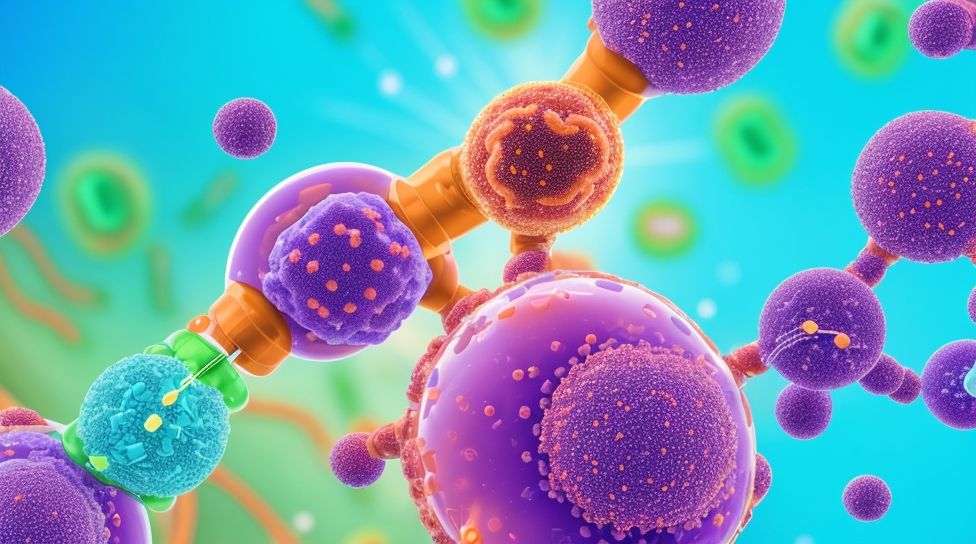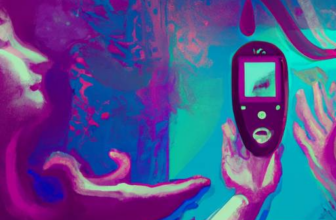Mastering Glucose Dynamics: A Comprehensive Guide to Blood Sugar 101
“
Blood sugar, also known as blood glucose, plays a vital role in the body’s overall health and functioning. Understanding the dynamics of glucose in the body and how it is regulated is crucial for maintaining stable blood sugar levels. In this article, we will explore the basics of blood sugar and the importance of its regulation.
Blood sugar refers to the concentration of glucose in the bloodstream. It serves as the primary source of energy for the body’s cells and organs. Proper blood sugar regulation is essential to ensure optimal functioning of various bodily processes and to prevent complications that can arise from excessively high or low blood sugar levels.
Glucose, the main sugar molecule utilized by the body, is obtained from the foods we consume. It is produced during digestion, particularly from carbohydrates that are broken down into glucose for absorption into the bloodstream. Once in the bloodstream, glucose is transported to every cell in the body to provide energy for various physiological functions.
The body maintains stable blood sugar levels through a complex regulatory mechanism involving various hormones, primarily insulin and glucagon. Insulin helps lower blood sugar levels by allowing glucose to enter cells for energy or storage, while glucagon triggers the release of stored glucose when blood sugar levels fall too low.
Both high and low blood sugar levels can have detrimental effects on the body. High blood sugar, also known as hyperglycemia, can lead to symptoms such as increased thirst, frequent urination, fatigue, and blurry vision. Persistent hyperglycemia can result in long-term complications such as nerve damage, eye problems, and cardiovascular disease.
Conversely, low blood sugar levels, known as hypoglycemia, can cause symptoms like shakiness, dizziness, confusion, and in severe cases, loss of consciousness or seizures. If left untreated, hypoglycemia can be life-threatening.
To maintain stable blood sugar levels, it is crucial to follow a balanced and nutritious diet. This includes consuming a variety of whole grains, lean proteins, fruits, vegetables, and healthy fats. Lifestyle changes such as regular physical activity, stress management, and adequate sleep are also essential in regulating blood sugar levels.
By understanding the intricacies of blood sugar regulation and implementing appropriate lifestyle modifications, individuals can maintain stable blood sugar levels and promote their overall well-being. Click here for more information.
“
Key takeaway:
- Blood sugar regulation is important: Understanding and managing blood sugar levels is crucial for overall health and well-being.
- Glucose plays a vital role in the body: Glucose serves as the main source of energy for the body’s cells and organs.
- Maintaining stable blood sugar levels is essential: Proper diet, lifestyle changes, and adherence to medical recommendations are key in regulating blood sugar levels.
What is Blood Sugar?
Blood sugar, also known as blood glucose, refers to the concentration of glucose present in the bloodstream. Glucose, which is a type of sugar derived from the food we consume, serves as the primary source of energy for our bodies. It is generated through the breakdown of carbohydrates during the process of digestion.
Maintaining optimal blood sugar levels is crucial for overall health. When blood sugar levels are excessively high or low, it can give rise to various health complications. Elevated blood sugar, known as hyperglycemia, manifests symptoms including increased thirst, frequent urination, and fatigue. Long-term complications of high blood sugar encompass kidney damage, nerve damage, and cardiovascular disease.
On the other hand, low blood sugar, referred to as hypoglycemia, may result in symptoms such as shakiness, dizziness, and confusion. If left untreated, it can progress to seizures and unconsciousness.
To sustain stable blood sugar levels, it is vital to follow a well-balanced diet that includes controlled consumption of carbohydrate-rich foods. Incorporating foods abundant in fiber, protein, and healthy fats aids in slowing down the absorption of glucose and prevents sudden spikes in blood sugar. Regular physical activity and maintaining a healthy weight also contribute to the regulation of blood sugar.
Comprehending blood sugar and its regulation is paramount in managing conditions like diabetes. By monitoring blood sugar levels, adhering to a suitable diet, and making necessary lifestyle adjustments, individuals can successfully maintain stable blood sugar levels and enhance their overall well-being.
Remember to seek personalized advice and recommendations on managing blood sugar levels from a healthcare professional.
Why is Blood Sugar Regulation Important?
Why is Blood Sugar Regulation Important?
Proper blood sugar regulation is of utmost importance for maintaining overall health and well-being. It plays a crucial role in several aspects, including energy balance, brain function, diabetes prevention, weight management, and overall health.
First and foremost, blood sugar, or glucose, serves as the primary source of energy for the body. By effectively regulating blood sugar levels, the body ensures a consistent and steady supply of energy for all bodily functions, allowing them to operate optimally.
Moreover, glucose is the main fuel for the brain. The brain heavily relies on a constant and reliable supply of glucose to function optimally. Blood sugar regulation is key to ensuring that the brain receives sufficient glucose, supporting cognitive function and overall brain health.
Furthermore, maintaining proper blood sugar regulation is essential for preventing the development of diabetes. By effectively managing blood sugar levels, individuals can significantly decrease the risk of developing type 2 diabetes, a chronic condition characterized by elevated blood sugar levels.
In addition, blood sugar regulation plays a pivotal role in weight management. By keeping blood sugar levels stable, the body is less likely to experience cravings and overeating, contributing to maintaining a healthy weight and reducing the risk of obesity.
Lastly, imbalances in blood sugar levels can have detrimental effects on various organs and systems in the body. Proper blood sugar regulation is vital in reducing the risk of complications such as cardiovascular disease, nerve damage, and kidney problems, promoting overall health and well-being.
Understanding the significance of blood sugar regulation empowers individuals to make informed choices regarding their diet and lifestyle. By adopting healthy habits and consciously making decisions, individuals can actively support their overall well-being and maintain stable blood sugar levels.
Glucose: the fuel that keeps our bodies going, powering us up like a never-ending sugar rush.
The Role of Glucose in the Body

Photo Credits: Diabetescompass.Com by Timothy Baker
Glucose plays a critical role in the body’s functioning and is essential for maintaining overall health. Here are the key roles of glucose:
- Primary Energy Source: Glucose is the primary source of energy for the body’s cells. When consumed through food, it is broken down and transported to cells through the bloodstream, where it is used for energy production.
- Brain Function: The brain relies heavily on glucose for its energy needs. It uses approximately 20% of the body’s total glucose supply, making it vital for proper brain function, cognition, and overall mental performance.
- Muscle Function: Glucose is crucial for muscle function and performance. During physical activity, muscles utilize glucose as a fuel source to generate the energy required for contraction and movement.
- Maintenance of Blood Sugar Levels: The body tightly regulates blood sugar levels to ensure they remain within a narrow range. Glucose, as a carbohydrate, plays a significant role in this regulation. When blood sugar levels are low, the liver releases stored glucose, known as glycogen, to maintain adequate levels.
- Storage and Release: Excess glucose is stored in the liver and muscles as glycogen for later use. When blood sugar levels drop, stored glycogen is broken down into glucose and released into the bloodstream to maintain energy balance.
- Hormonal Regulation: Hormones such as insulin and glucagon help regulate glucose levels in the body. Insulin facilitates the uptake of glucose into cells and promotes its storage, while glucagon stimulates the release of stored glucose when needed.
- Metabolic Processes: Glucose is involved in various metabolic processes within the body. It serves as a precursor for the synthesis of other molecules, such as amino acids, nucleotides, and lipids, which are essential for cell growth, repair, and overall metabolism.
- Organ Function: Glucose is vital for the proper functioning of organs such as the heart, liver, and kidneys. These organs require a constant supply of glucose to perform their specialized functions effectively.
Understanding the role of glucose in the body is crucial for maintaining a balanced and healthy lifestyle. Proper glucose dynamics and regulation are essential for overall well-being and optimal bodily functions.
What is Glucose?
Glucose is a type of sugar that is essential for the body’s energy production and function. It is a simple carbohydrate that is primarily derived from the breakdown of carbohydrates in the diet. Glucose serves as the primary source of fuel for the body’s cells and is particularly important for the brain and muscles.
The body regulates glucose levels carefully to ensure that they stay within a narrow range. When glucose levels in the blood rise, the pancreas releases insulin, a hormone that helps cells take in glucose and use it for energy. On the other hand, when glucose levels drop, the pancreas releases another hormone called glucagon, which signals the liver to release stored glucose and increase blood sugar levels.
Glucose is used by the body for various purposes. It can be immediately utilized for energy by cells or stored in the liver and muscles as glycogen for later use. Glucose is an important component in the synthesis of other molecules, such as fatty acids and proteins.
The body’s ability to regulate glucose levels is crucial for overall health. Imbalances in blood sugar levels, such as high or low blood sugar, can have negative effects on various bodily functions and may lead to serious health complications if left untreated.
Glucose is a vital source of energy for the body and plays a crucial role in maintaining overall health. Its regulation is carefully managed by hormones to ensure optimal functioning of cells and organs.
Glucose production: It’s like a factory in your body, but instead of churning out cars, it’s cranking out sweet, sweet sugar.
How is Glucose Produced?
Glucose production in the body occurs through a process known as gluconeogenesis. This process primarily takes place in the liver and, to a lesser extent, in the kidneys. During gluconeogenesis, specific molecules such as amino acids and glycerol undergo conversion into glucose, which serves as a vital source of energy. The liver plays a significant role in maintaining stable blood sugar levels by facilitating this process.
Apart from gluconeogenesis, glucose can also be acquired through the digestion and breakdown of carbohydrates present in the diet. When we consume carbohydrate-rich foods like grains, fruits, and vegetables, these compounds are broken down into glucose during the process of digestion. Subsequently, the glucose is absorbed into the bloodstream and utilized by cells to provide energy for various bodily functions.
Sarah’s inspiring real-life story exemplifies how glucose production takes place in the body. As a young athlete participating in a marathon, Sarah’s body required a continuous supply of energy to sustain her during the long-distance run. Consequently, her body relied on glucose produced through gluconeogenesis to meet the heightened energy demands. This enabled Sarah to maintain her stamina and successfully complete the race.
Understanding the process of glucose production in the body is crucial for individuals with conditions such as diabetes, where regulation of blood sugar becomes impaired. By being knowledgeable about the sources of glucose production, individuals can make informed choices regarding their diet and lifestyle, ultimately helping them to maintain stable blood sugar levels.
Glucose: the ultimate fuel for your body’s never-ending marathon.
How is Glucose Used in the Body?
Glucose is used in the body as a primary source of energy for various physiological processes.
In summary, glucose is utilized by the body to power essential functions, maintain optimal brain function, fuel muscles during physical activity, support organ function, and provide a backup energy source through glycogen storage. Its role as a primary energy source highlights the importance of regulating blood sugar levels to ensure a steady supply of glucose for overall health and well-being.
Understanding Glucose Dynamics

Photo Credits: Diabetescompass.Com by Jacob Wright
Glucose dynamics refer to the processes and mechanisms involved in the regulation and movement of glucose in the body. Understanding these dynamics is essential for comprehending how the body maintains blood sugar levels. Here are key aspects to understand about glucose dynamics:
- Glucose Metabolism: Glucose is the primary source of energy for the body’s cells. It is obtained from the digestion and breakdown of carbohydrates in the diet. Glucose metabolism involves the conversion of glucose into usable energy through processes like glycolysis, the Krebs cycle, and oxidative phosphorylation.
- Insulin and Glucagon Regulation: Insulin and glucagon are hormones produced by the pancreas that play crucial roles in glucose dynamics. Insulin is released when blood sugar levels rise, promoting the uptake and storage of glucose in cells, thus lowering blood sugar levels. Glucagon, on the other hand, is released when blood sugar levels are low, stimulating the release of stored glucose from the liver to increase blood sugar levels.
- Glycogenesis and Glycogenolysis: Glycogenesis is the process of converting excess glucose into glycogen, which is stored in the liver and muscles for future energy needs. Glycogenolysis is the breakdown of glycogen back into glucose when the body requires additional energy.
- Gluconeogenesis: Gluconeogenesis is the process of synthesizing glucose from non-carbohydrate sources, such as amino acids and glycerol, when glucose availability is limited. This ensures a steady supply of glucose for the body, particularly during fasting or low carbohydrate intake.
- Glucose Transport: Glucose needs to be transported from the bloodstream into cells for energy production. This is facilitated by glucose transporters, such as GLUT proteins, which are responsible for transporting glucose across cell membranes.
- Regulation by Hormones: Besides insulin and glucagon, other hormones, such as cortisol, adrenaline, and growth hormone, also influence glucose dynamics. They can increase blood sugar levels during times of stress, physical activity, or fasting.
- Disorders and Imbalances: Disturbances in glucose dynamics can lead to various health conditions, including diabetes mellitus. In diabetes, the body struggles to regulate blood sugar levels effectively, resulting in high blood sugar levels (hyperglycemia) or low blood sugar levels (hypoglycemia).
By understanding the intricacies of glucose dynamics, individuals can make informed decisions about their diet, exercise, and overall lifestyle to maintain healthy blood sugar levels and promote overall well-being.
How is Blood Sugar Regulated?
Blood sugar regulation is a complex process that involves multiple mechanisms in the body. Hormones play a key role in maintaining stable blood sugar levels.
The main hormone responsible for lowering blood sugar is insulin. Insulin is released by the pancreas when blood sugar levels rise. It helps glucose enter the cells, where it can be used for energy or stored for later use. Insulin also inhibits the liver from producing more glucose.
On the other hand, when blood sugar levels drop, another hormone called glucagon is released. Glucagon stimulates the liver to release stored glucose into the bloodstream, raising blood sugar levels.
Other hormones like cortisol, adrenaline, and growth hormone can also affect blood sugar levels, especially in times of stress or physical activity.
The body constantly monitors blood sugar levels and adjusts the release of these hormones to maintain a balance. This dynamic regulation ensures that blood sugar stays within a healthy range.
It’s important to note that in individuals with diabetes, this regulation process may be impaired. They may need to monitor their blood sugar levels closely and require medication or insulin therapy to help regulate their blood sugar.
By understanding how blood sugar is regulated and the role of hormones in this process, individuals can make informed decisions about their diet, lifestyle, and medication to help maintain stable blood sugar levels.
In 1921, Dr. Frederick Banting and his student Charles Best made a groundbreaking discovery that led to the isolation and production of insulin for the treatment of diabetes. This discovery revolutionized the management of diabetes and provided hope for millions of people around the world. The understanding of blood sugar regulation continues to evolve, leading to advancements in diabetes research and treatment options.
Meet the cast of ‘Blood Sugar Regulation’: Insulin, Glucagon, and Cortisol – the triple threat hormone team keeping your blood sugar in check!
What are the Hormones Involved in Blood Sugar Regulation?
The hormones involved in blood sugar regulation, including insulin, glucagon, and epinephrine, play a crucial role in maintaining stable glucose levels in the body.
Insulin, which is produced by the pancreas, helps to lower blood sugar levels. It achieves this by facilitating the uptake of glucose into cells, promoting the storage of glucose in the liver and muscles as glycogen. Additionally, insulin enhances the conversion of glucose into fat for long-term energy storage.
On the other hand, glucagon, also produced by the pancreas, acts in opposition to insulin. It raises blood sugar levels by stimulating the breakdown of glycogen stored in the liver and muscles, allowing the release of glucose into the bloodstream. Furthermore, glucagon stimulates the liver to produce glucose through a process called gluconeogenesis.
Epinephrine, also referred to as adrenaline, is released by the adrenal glands when experiencing stress or low blood sugar levels. This hormone increases blood sugar levels by stimulating the breakdown of glycogen and the release of glucose from the liver.
Working together, these hormones maintain the delicate balance of blood sugar in the body. When blood sugar levels are too high, insulin is released to reduce it. Conversely, when blood sugar levels are too low, glucagon and epinephrine are released to raise it.
To ensure the proper functioning of these hormones and maintain stable blood sugar levels, it is important to follow a healthy diet, engage in regular exercise, and effectively manage stress. These lifestyle factors contribute to the regulation of blood sugar levels.
High blood sugar: Not just for breakfast anymore, it’s the trend that’s sweeping the nation!
The Effects of High Blood Sugar

Photo Credits: Diabetescompass.Com by John Wilson
High blood sugar, also known as hyperglycemia, can have various detrimental effects on the body. Here are some key effects of high blood sugar:
- Increased Thirst and Frequent Urination: When blood sugar levels are high, the kidneys work harder to filter and absorb the excess glucose. This leads to increased urine production, causing frequent urination. As a result, the body becomes dehydrated, leading to increased thirst.
- Weight Loss: High blood sugar can cause unintentional weight loss. When there is insufficient insulin or insulin resistance, the body cannot properly utilize glucose for energy. As a compensatory mechanism, the body starts breaking down muscle and fat for energy, resulting in weight loss.
- Fatigue and Weakness: Inadequate glucose utilization due to high blood sugar can leave cells without the necessary energy. This can lead to feelings of fatigue, weakness, and overall decreased energy levels.
- Blurred Vision: Elevated blood sugar levels can cause changes in the shape of the lens in the eye, resulting in blurred vision. This effect is usually temporary and resolves once blood sugar levels are restored to normal.
- Increased Risk of Infections: High blood sugar weakens the immune system, making individuals more susceptible to infections. Bacterial and fungal infections, such as urinary tract infections and yeast infections, are more common in individuals with uncontrolled diabetes.
- Delayed Wound Healing: High blood sugar can impair the body’s ability to heal wounds. It affects the function of immune cells and blood vessels, leading to delayed wound healing and an increased risk of infections.
- Nerve Damage: Prolonged high blood sugar levels can damage the nerves in the body, leading to a condition known as diabetic neuropathy. This can cause symptoms such as numbness, tingling, and pain, particularly in the feet and hands.
- Cardiovascular Complications: High blood sugar contributes to the development of cardiovascular problems. It increases the risk of heart disease, stroke, and other complications by damaging blood vessels and promoting the formation of plaques.
- Kidney Damage: The kidneys play a vital role in filtering waste products from the blood. High blood sugar can damage the small blood vessels in the kidneys, leading to a condition called diabetic nephropathy. Over time, this can progress to kidney failure.
- Long-Term Complications: Consistently elevated blood sugar levels can contribute to the development of long-term complications of diabetes. These include nerve damage, kidney disease, eye problems, heart disease, and a higher risk of stroke.
It is crucial to manage blood sugar levels effectively through lifestyle modifications, medication, and regular monitoring to prevent or minimize the negative effects of high blood sugar on the body.
What are the Symptoms of High Blood Sugar?
What are the Symptoms of High Blood Sugar?
- Frequent urination: High blood sugar levels can cause the kidneys to work harder to remove the excess glucose from the blood, leading to increased urination.
- Excessive thirst: The frequent urination caused by high blood sugar levels can result in dehydration, leading to feelings of excessive thirst.
- Increased hunger: High blood sugar levels can interfere with the body’s ability to properly use glucose for energy, leading to increased hunger.
- Unexplained weight loss: When the body cannot use glucose properly, it starts breaking down fat and muscle tissue for energy, resulting in unexplained weight loss.
- Fatigue: Cells are not receiving enough glucose for energy, leading to feelings of tiredness and fatigue.
- Blurred vision: High blood sugar levels can affect the shape of the lens in the eye, causing temporary changes in vision.
- Slow healing of wounds: High blood sugar can impair blood circulation and damage blood vessels, leading to slow healing of wounds.
- Recurrent infections: High blood sugar levels can weaken the immune system, making individuals more susceptible to infections, such as urinary tract infections or yeast infections.
What are the Long-term Complications of High Blood Sugar?
What are the Long-term Complications of High Blood Sugar?
High blood sugar, also known as hyperglycemia, can lead to various long-term complications if left untreated. These complications can significantly impact a person’s health and quality of life.
1. Increased risk of cardiovascular disease: High blood sugar levels can damage blood vessels over time, leading to an increased risk of heart disease, heart attack, and stroke.
2. Kidney damage: Prolonged high blood sugar can damage the kidneys’ filtering system, leading to chronic kidney disease and potentially requiring dialysis or kidney transplantation.
3. Nerve damage: Elevated blood sugar levels can cause damage to the nerves throughout the body. This can result in conditions such as diabetic neuropathy, causing tingling, numbness, or pain in the hands, feet, or other parts of the body.
4. Eye problems: High blood sugar levels can damage the blood vessels in the eyes, leading to a condition called diabetic retinopathy. This can result in vision loss or even blindness if left untreated.
5. Poor wound healing: Elevated blood sugar levels can impair the body’s ability to heal wounds, increasing the risk of infections and complications from injuries or surgeries.
6. Increased susceptibility to infections: High blood sugar weakens the immune system, making it harder for the body to fight off infections, including urinary tract infections, skin infections, and respiratory infections.
It is important to manage blood sugar levels through proper diet, regular exercise, medication (if prescribed), and regular monitoring to prevent or minimize the risk of these long-term complications. Consulting with a healthcare professional is essential for personalized guidance in managing blood sugar levels effectively.
Don’t let low blood sugar bring you down, it’s time to rise and shine with these symptoms to watch out for!
The Effects of Low Blood Sugar

Photo Credits: Diabetescompass.Com by John Martin
Low blood sugar, also known as hypoglycemia, can have various effects on the body:
- Physical Symptoms: When blood sugar levels drop too low, individuals may experience physical symptoms such as dizziness, shakiness, sweating, weakness, fatigue, and headaches. These symptoms are the body’s way of signaling a need for glucose to fuel the cells.
- Cognitive Impairment: Low blood sugar can affect cognitive function, leading to difficulties in concentration, memory, and decision-making. Individuals may experience confusion, irritability, mood changes, and an inability to think clearly.
- Emotional Disturbances: Hypoglycemia can also impact emotions, causing anxiety, restlessness, nervousness, and even panic attacks in some cases. Emotional stability may be compromised, leading to mood swings and irritability.
- Hunger and Cravings: Low blood sugar triggers hunger signals in the body, making individuals feel intensely hungry and increasing cravings for quick sources of energy, especially foods high in sugar or carbohydrates.
- Impaired Physical Performance: Low blood sugar can negatively affect physical performance and coordination. Individuals may experience difficulties with balance, muscle weakness, and motor skills, making tasks that require physical exertion more challenging.
- Severe Hypoglycemia: In severe cases, untreated hypoglycemia can lead to seizures, loss of consciousness, and in rare instances, coma. It is crucial to promptly address and treat low blood sugar to prevent these severe complications.
Understanding the effects of low blood sugar is essential for individuals with diabetes or other conditions that impact glucose regulation. It allows for prompt recognition and appropriate management to maintain optimal blood sugar levels and overall well-being.
What are the Symptoms of Low Blood Sugar?
Low blood sugar, also known as hypoglycemia, can cause various symptoms in the body. So, what are the symptoms of low blood sugar? The symptoms can vary from person to person but typically include sweating, shakiness, dizziness, weakness, confusion, irritability, and hunger. In severe cases, low blood sugar can lead to unconsciousness or seizures.
The symptoms of low blood sugar occur when the glucose levels in the bloodstream drop below normal. Glucose is the main source of energy for the body and is derived from the food we eat. When glucose levels decrease, the body sends out signals to release hormones, such as adrenaline and glucagon, to raise the blood sugar levels.
It is important to recognize the symptoms of low blood sugar and take appropriate action to raise the blood sugar levels. Consuming a carbohydrate-rich snack or drink, like fruit juice or a granola bar, can quickly increase blood sugar levels. If left untreated, low blood sugar can become dangerous and may require emergency medical attention.
Individuals who are at risk of low blood sugar, such as those with diabetes or certain medical conditions, should monitor their blood sugar levels regularly and be aware of the symptoms. It is also beneficial to have a plan in place for managing low blood sugar, including carrying glucose tablets or other sources of fast-acting carbohydrates.
Being aware of the symptoms of low blood sugar and taking prompt action to raise blood sugar levels can help prevent complications and maintain stable blood sugar levels.
The risks of untreated low blood sugar can turn your world upside down faster than a kid on a sugar high.
What are the Risks of Untreated Low Blood Sugar?
Untreated low blood sugar can have serious risks and complications. If low blood sugar is left untreated, it can lead to increased fatigue and weakness, making it difficult to carry out daily activities efficiently. Additionally, untreated low blood sugar can cause confusion, difficulty in concentrating, and dizziness, which can affect cognitive function and make it unsafe to drive or operate machinery. In severe cases, untreated low blood sugar can even result in a loss of consciousness or fainting, posing a significant danger, especially if immediate medical attention is not available. Prolonged untreated low blood sugar also increases the risk of seizures, which can be life-threatening and may require emergency medical intervention. Furthermore, in rare cases, severe and prolonged untreated low blood sugar can cause permanent brain damage, particularly if the brain is deprived of glucose for an extended period of time. Taking prompt action to treat low blood sugar is crucial, such as consuming a source of fast-acting sugar like fruit juice or glucose tablets. If symptoms persist or worsen, it is essential to seek immediate medical attention. Additionally, regular monitoring of blood sugar levels and following a well-balanced diet can help prevent the risks associated with untreated low blood sugar.
How to Maintain Stable Blood Sugar Levels

Photo Credits: Diabetescompass.Com by Ralph Lewis
To maintain stable blood sugar levels, follow these essential tips:
- Eat a Balanced Diet: Include a combination of complex carbohydrates, lean proteins, and healthy fats in your meals. Avoid excessive consumption of sugary foods and refined carbohydrates.
- Portion Control: Be mindful of portion sizes to prevent overeating. This helps regulate the amount of glucose entering your bloodstream at a given time.
- Regular Meal Schedule: Stick to a consistent meal schedule to keep blood sugar levels stable throughout the day. Avoid skipping meals or going long periods without eating.
- Choose Low Glycemic Index Foods: Opt for foods with a low glycemic index (GI) as they cause a slower and more gradual rise in blood sugar levels. Examples include whole grains, vegetables, and legumes.
- Fiber-Rich Foods: Incorporate fiber-rich foods like fruits, vegetables, whole grains, and beans into your diet. Fiber helps slow down the absorption of glucose, preventing spikes in blood sugar levels.
- Regular Physical Activity: Engage in regular exercise or physical activity to improve insulin sensitivity and help regulate blood sugar levels. Aim for at least 150 minutes of moderate-intensity aerobic activity per week.
- Stay Hydrated: Drink an adequate amount of water throughout the day to support overall health and assist in maintaining stable blood sugar levels.
- Avoid Sugary Beverages: Limit or avoid sugary drinks such as soda, fruit juices, and sweetened teas, as they can cause rapid spikes in blood sugar levels.
- Manage Stress: Chronic stress can affect blood sugar levels. Practice stress management techniques such as deep breathing, meditation, or engaging in hobbies to help keep stress levels in check.
- Get Enough Sleep: Aim for 7-9 hours of quality sleep each night. Inadequate sleep can disrupt insulin sensitivity and lead to imbalances in blood sugar levels.
- Monitor Blood Sugar Levels: Regularly monitor your blood sugar levels as advised by your healthcare provider. This helps you understand how your lifestyle choices and habits impact your blood sugar and allows you to make necessary adjustments.
By incorporating these practices into your daily routine, you can maintain stable blood sugar levels, support overall health, and reduce the risk of developing complications related to blood sugar imbalances.
What are the Dietary Recommendations?
When it comes to maintaining stable blood sugar levels, following the right dietary recommendations is crucial. A balanced and healthy diet plays a key role in regulating blood sugar levels and preventing spikes or crashes. Here are some important dietary recommendations to consider:
| Food Group | Recommendation |
|---|---|
| Carbohydrates | Choose complex carbohydrates with a low glycemic index, such as whole grains, legumes, and vegetables. These foods release glucose into the bloodstream slowly, preventing rapid spikes in blood sugar. |
| Protein | Incorporate lean sources of protein, such as poultry, fish, tofu, and beans, into your meals. Protein helps stabilize blood sugar levels and keeps you feeling full. |
| Fiber | Eat fiber-rich foods like fruits, vegetables, and whole grains. Fiber slows down the absorption of glucose, preventing sudden rises in blood sugar. |
| Fats | Include healthy fats, like avocados, nuts, and olive oil, in your diet. These fats promote satiety and can help regulate blood sugar levels. |
| Sugar and sugary foods | Avoid or limit the intake of sugary foods, sodas, and desserts as they can cause rapid spikes in blood sugar levels. |
| Portion control | Be mindful of portion sizes to prevent overeating, which can lead to imbalanced blood sugar levels. |
Remember that individual dietary needs may vary, so it’s essential to work with a healthcare professional or registered dietitian to create a personalized meal plan that suits your specific requirements and health goals.
What Lifestyle Changes can Help Regulate Blood Sugar?
Incorporating lifestyle changes can help regulate blood sugar levels and maintain stability. If you’re wondering what lifestyle changes can help regulate blood sugar, here are some suggestions:
- Regular exercise: Engaging in daily physical activity can improve insulin sensitivity and promote glucose uptake by cells. Aim for at least 150 minutes of moderate-intensity aerobic exercise per week, such as brisk walking or cycling.
- Healthy diet: Adopt a balanced diet rich in whole grains, lean proteins, fruits, and vegetables to regulate blood sugar levels. It’s important to avoid sugary and processed foods and opt for foods with a low glycemic index.
- Portion control: By monitoring portion sizes, you can prevent overeating and excessive carbohydrate intake, which can cause blood sugar spikes. Measure and plan your meals to ensure a balanced nutrient intake.
- Stress management: Chronic stress can negatively affect blood sugar control. Practice relaxation techniques like meditation, deep breathing exercises, or mindfulness to reduce stress levels.
- Adequate sleep: Lack of sleep can disrupt hormonal balance and impact blood sugar regulation. Aim for 7-8 hours of quality sleep each night to support overall health and stable blood sugar levels.
- Maintain a healthy weight: Losing excess weight and achieving a healthy body weight can improve insulin sensitivity and enhance blood sugar control. If needed, consult with a healthcare professional to determine a suitable weight loss plan.
- Regular monitoring: Keep track of your blood sugar levels regularly to identify any patterns or fluctuations. This can help you make necessary adjustments to your lifestyle and treatment plan, if required.
By incorporating these lifestyle changes, you can support optimal blood sugar regulation and overall well-being. Remember to consult with a healthcare professional for personalized advice and guidance.
Some Facts About Blood Sugar 101: Understanding Glucose Dynamics in the Body:
- ✅ Blood glucose dynamics play a crucial role in the diagnosis and treatment of diabetes. (Source: Our Team)
- ✅ Limited data sets about blood glucose dynamics have hindered its use in the diagnosis and treatment of diabetes. (Source: Our Team)
- ✅ New methods of analysis are needed to extract maximum information from blood glucose data. (Source: Our Team)
- ✅ Individuals without diabetes exhibit four time scales of blood glucose variations. (Source: Our Team)
- ✅ Understanding blood glucose dynamics is essential for improving the diagnosis and treatment of diabetes. (Source: Our Team)
Frequently Asked Questions
What are blood glucose dynamics and why are they important in the diagnosis and treatment of diabetes?
Blood glucose dynamics refer to the intrinsic changes in blood glucose levels over time. They play a crucial role in the diagnosis and treatment of diabetes as they provide valuable insights into the condition. By understanding blood glucose dynamics, healthcare professionals can better manage diabetes and make informed decisions regarding treatment options.
Can blood glucose excursions be analyzed to improve diabetes management?
Yes, blood glucose excursions, which are variations in blood glucose levels, can be analyzed to enhance diabetes management. Current monitoring methods primarily focus on discrete measurements, but future monitoring is expected to concentrate on analyzing blood glucose excursions. By studying these excursions, healthcare professionals can gain a deeper understanding of blood glucose dynamics and tailor treatment plans accordingly.
How can a patient profiling system assist in the diagnosis and treatment of diabetes?
A patient profiling system is proposed to characterize blood glucose dynamics and individualize diabetes care. This system categorizes individuals based on their blood glucose variations, which may be modified or lost in diabetes. By understanding these profiles, healthcare professionals can develop personalized treatment plans and improve the effectiveness of diabetes management.
What are some tips for successfully managing blood sugar levels?
To successfully manage blood sugar levels, it is advised to:
– Eat a healthy diet consisting of vegetables, fruits, whole grains, and lean proteins.
– Limit consumption of sugary, processed, and salty foods.
– Regularly check blood sugar levels if diagnosed with Type 2 diabetes.
– Engage in regular physical activity to lower the risk of diabetes and help manage the disease.
– Maintain a healthy weight through a balanced diet and exercise.
– Avoid nicotine in any form, as it increases the risk of heart disease and other chronic conditions.
What are the categories of blood glucose levels and what do they indicate?
Blood glucose levels are categorized as follows:
– Lower than 100 mg/dl: Normal blood glucose level.
– 100 to 125 mg/dl: Indicates prediabetes.
– 126 mg/dl or higher: Signifies Type 2 diabetes.
What additional resources can provide further information on blood glucose dynamics and diabetes management?
In addition to the mentioned reference data, other literature sources such as benchmark data for evaluating glucose sensing technologies, research papers on stochastic models for variability assessment, and clinical practice recommendations for diabetes management offer valuable insights. Continuous glucose monitoring (CGM) is also reviewed as a potential method for monitoring blood glucose levels. These resources contribute to a comprehensive understanding of blood glucose dynamics and strategies for better diabetes management.






